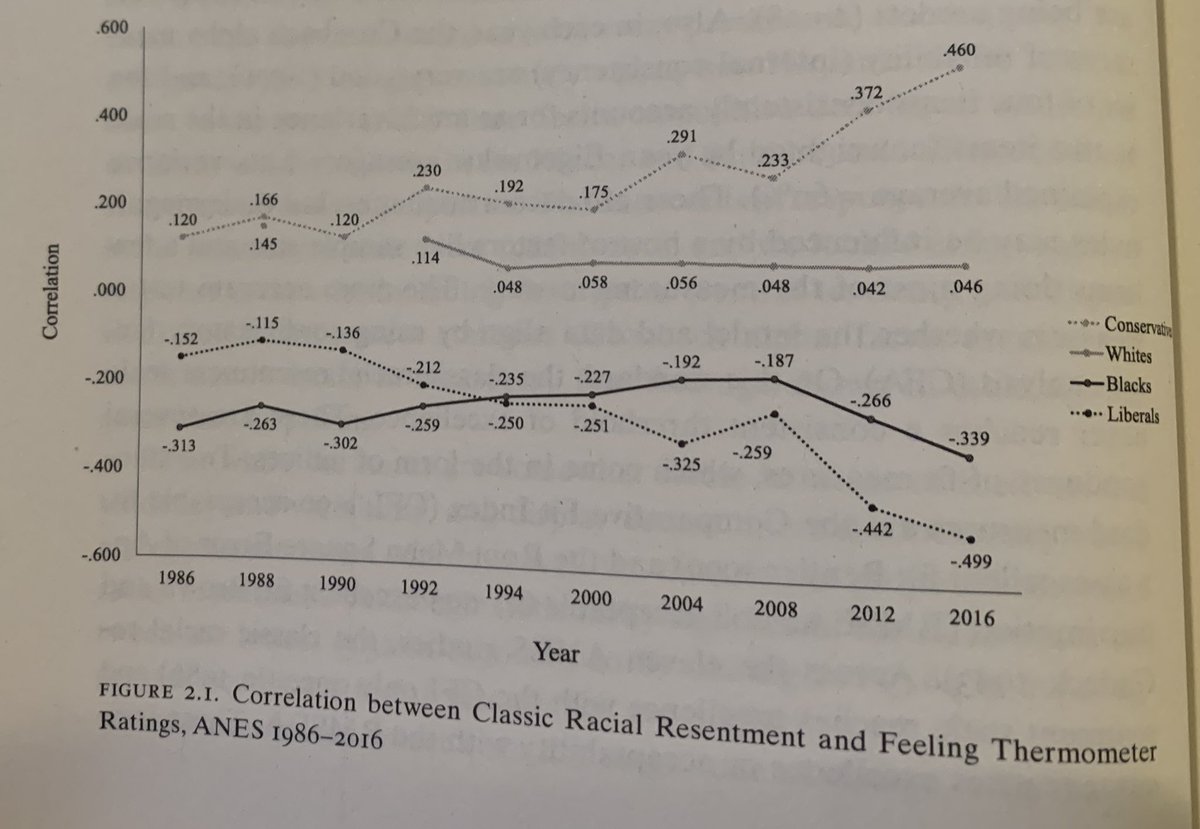
Racial resentment, from this alternative scale, stems from just-world orientation & legitimizing racial myths, not prejudice, producing retribution in support of maintaining the status quo
From: Racial Resentment in the Political Mind
press.uchicago.edu/ucp/books/book…
From: Racial Resentment in the Political Mind
press.uchicago.edu/ucp/books/book…

The traditional racial resentment scale has become more closely tied to views of liberals & conservatives over time & is not closely tied to views of whites
From: Racial Resentment in the Political Mind
press.uchicago.edu/ucp/books/book…
From: Racial Resentment in the Political Mind
press.uchicago.edu/ucp/books/book…

Support for voting rights is higher when they are characterized as general laws that would protect a group rather than special laws targeted at protecting that group
press.uchicago.edu/ucp/books/book…
press.uchicago.edu/ucp/books/book…

Racial resentment helped explain blame on Obama, the success of Trump’s Make America Great Again slogan, & racial & non-racial policy attitudes, but is partly tied to social dominance orientation & system justification that are also explanations
press.uchicago.edu/ucp/books/book…
press.uchicago.edu/ucp/books/book…
Black Americans have a distinct form of racial resentment against whites’ denial of racial discrimination & Black effort that better explains their views than linked fate
Lots of interest in Racial Resentment in the Political Mind:
press.uchicago.edu/ucp/books/book…
Lots of interest in Racial Resentment in the Political Mind:
press.uchicago.edu/ucp/books/book…

• • •
Missing some Tweet in this thread? You can try to
force a refresh









